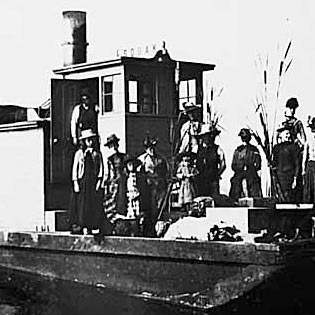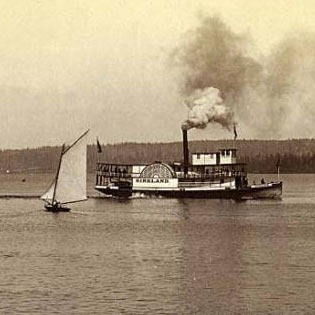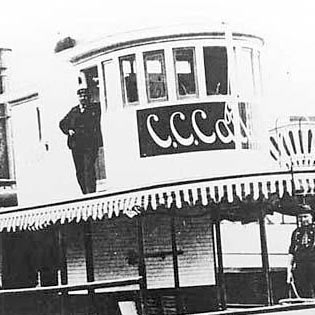RESOURCES
Links to external websites do not constitute endorsement by WSDOT of the linked websites or the opinions, information, products or services contained therein.
During the settlement era in the 1860s and 1870s, scows, many of them more than 50 feet long and nearly 10 feet wide, were often used to carry large loads around the region's inland waterways. Some had three sets of oars to use in open water and poles for shallower water. Rowboats, some of which could carry two tons of freight themselves, also pulled the scows. Settlers frequently hired local Indian residents to carry passengers and cargo. Some of the Indian canoes, made of cedar logs, could carry several tons of freight.
Indians had long used both the Montlake Portage, a land route between Lake Washington and Lake Union just north of downtown Seattle, and the Duwamish and Black rivers south of the city, to travel between the interior waterways and Puget Sound. They also used the rivers and lakes to move seasonally between the coast and the interior and to hunt, fish, and gather resources. Trade routes and social networks also relied heavily on travel over regional water bodies, including Puget Sound.
Wagon roads followed the route of Indian trails over First Hill and Capitol Hill and down to Lake Washington docks. These locations had long been important to Native communities as sites for resource gathering and as seasonal villages, and the neighborhoods of Leschi and Madison Park grew up around these docks. Eventually, street car lines developed, connecting the docks to downtown Seattle.
In 1884, the steam scow Squak began ferrying passengers across Lake Washington. An ungainly looking vessel, the flat-bottom boat was able to traverse the shallow Squak slough into Lake Sammamish. Other, more eye-pleasing steamers, operated on Lake Washington between the late 1880s and the 1900s, such as the Elfin, the Winnifred, the Quickstep, the Kirkland, the Xanthus, and the Cyrene.
For more information about the steam scow Squak, visit HistoryLink.org.



